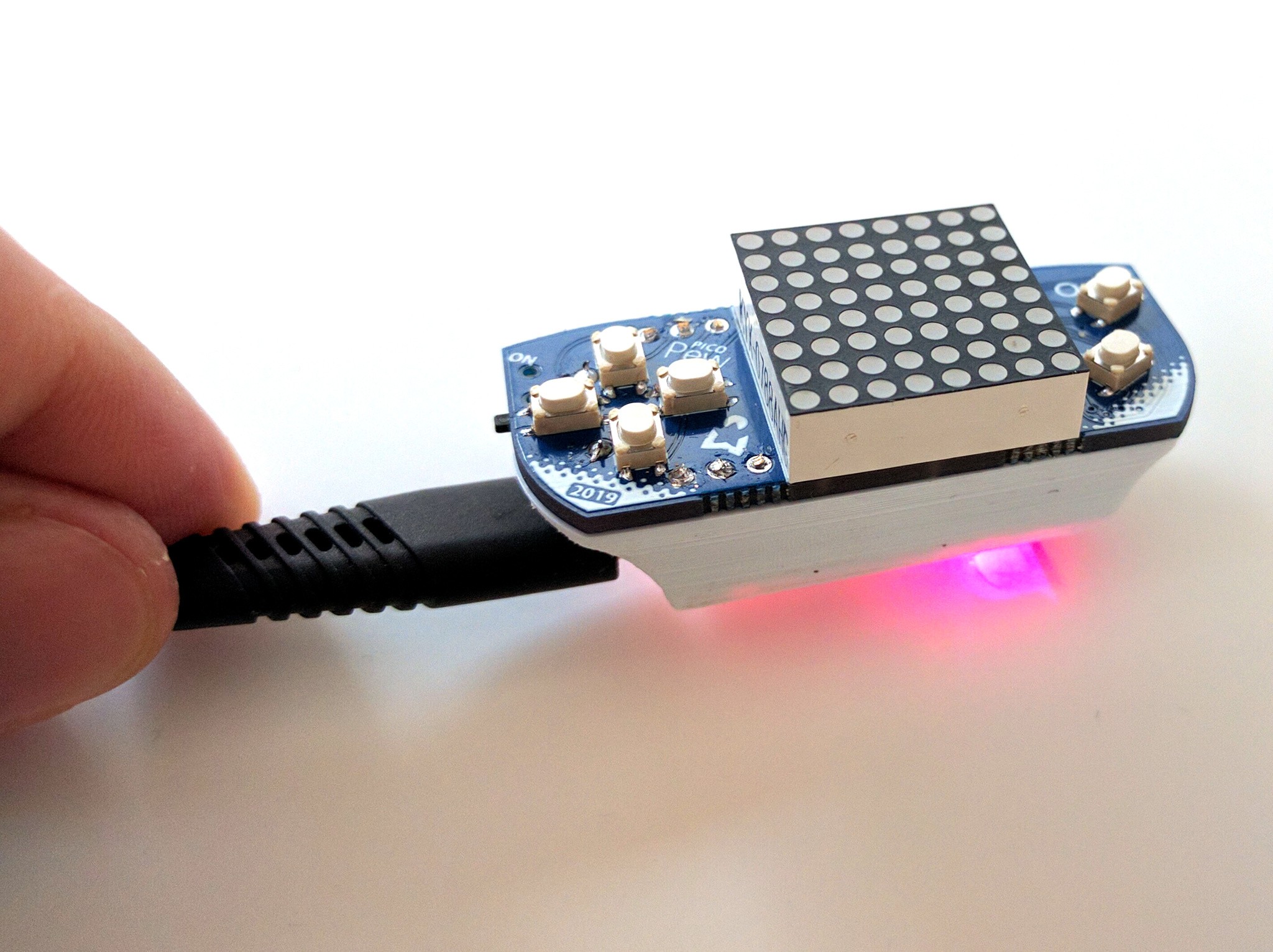I don't think I have written about it here yet, but there is one more member of the PewPew family of devices, and this time it's not made by me, which makes me really happy. I'm talking about the a project by @Christian Walther called #PicoPew. You should go there and read the project logs, I think they are interesting and very detailed. It's much more powerful device, with a bi-color matrix with 256 possible colors, esp32-based with TinyPICO wifi board as the brains, and a really small form factor. I have obtained a working one by trading both with Christian and with Unexpected Maker for a #PewPew M4 (one for the shield, one for the TinyPICO).
Here it is all assembled, and with an enclosure that Christian 3D-printed for me:

I still need to get all the software on the device, but so far it seems to be functioning as expected. I love how the Pew library has worked here as a kind of a base standard, on top of which more functionality is built. I didn't anticipate this, but maybe it will really become a platform.
 deʃhipu
deʃhipu
Discussions
Become a Hackaday.io Member
Create an account to leave a comment. Already have an account? Log In.
Good to see it’s working so far, hope the display and buttons will too once you add the library! The display seems to fit nicely, did you replace the capacitor?
I think the Pew API is a great base standard, very well designed to be simple yet capable. I tried to keep my additions to it as minimal as possible, so that the PicoPew can be a full member of the extended PewPew family. Maybe they can even evolve into part of the standard for future devices.
Are you sure? yes | no
I did replace the capacitor, thank you. It all fits very tightly and neatly. I actually had to use a knife on the case a little bit to enlarge the room for the TinyPICO and its antenna, but after that it snaps in there and is practically impossible to remove.
Are you sure? yes | no
Good to know. Better too tight than too loose. Some tolerance is to be expected, a smaller distance between nozzle and bed may cause the first layer to squirt out more, and different materials may shrink differently when cooling.
Are you sure? yes | no